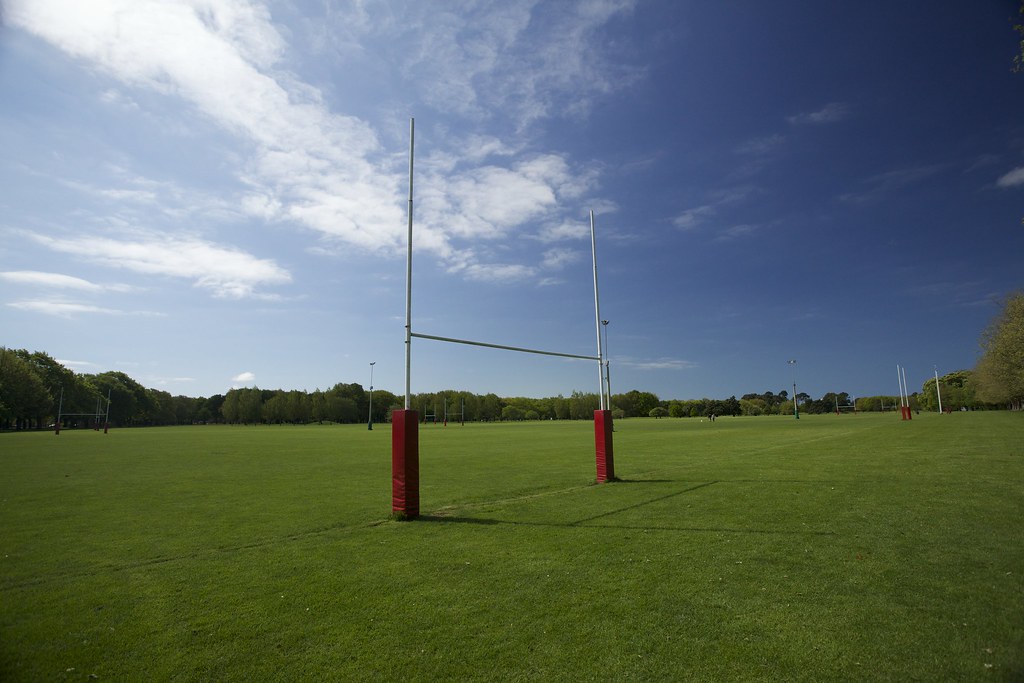The most common way to score is with a try. Worth five points, it is when you place the ball down in the other team’s try zone.
Unlike in football, you have to touch it down to the ground in a controlled motion, or touch it to the uprights. A try doesn’t count if it is held up by the other team. That’s when they put their hands between the ball and the ground. If that happens, there is a scrum at the five meter line.
After a try is scored, the scoring team can then attempt to earn another two points with a conversion kick and have it go through the uprights above the middle bar.

This can either be done with a drop kick, where the ball must leave the player’s hands and touch the ground before it is kicked, or off the ground with a tee. The conversion kick is done in line from where the ball was touched down. So if the ball was placed down near the edge of the field, you can back up as much as you want, but you have to kick it in from the edge of the field.
Another way to earn points is with a penalty, or free, kick. This option is chosen by the team receiving the penalty if they are close enough to the uprights and they have a strong kicker on their team. successfully making this kick is worth three points.










